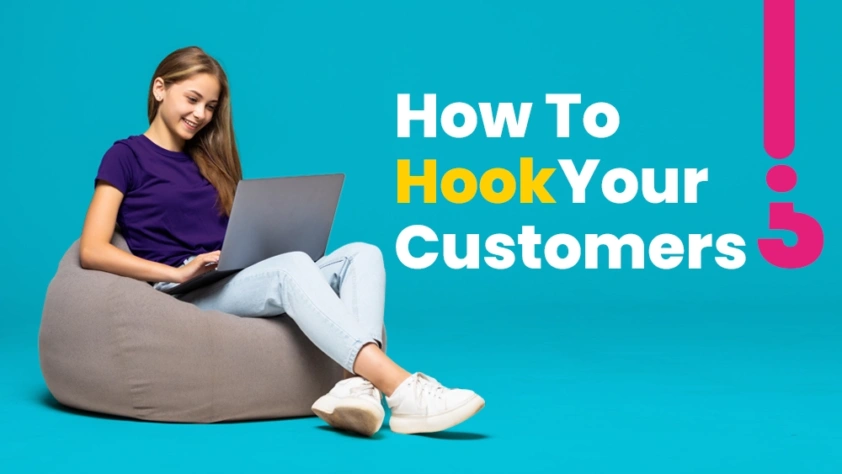Success as a business depends on giving clients a wonderful experience. To do this, you must have a complete customer experience design (CXD) strategy. I’ll go over the significance of CXD, how it helps startups and SaaS, and implementation advice in this blog.
Customer Experience Design: What is it?
Customer experience design (CXD) develops and improves customer experiences to boost client happiness and loyalty. Understanding customer needs, mapping the customer journey, and building an experience that satisfies those goals are all steps in the CXD process. In order to ensure that the customer experience is as good as it can be, a continuous process of customer data analysis, customer journey optimization, testing, and iteration is used.
CXD is fundamentally about designing an experience that fulfills consumer needs and makes them happy. Creating a whole experience that appeals to customers and keeps them returning is essential, not simply a product.
Customer Experience Design’s advantages
Putting into practice a customer experience design strategy has numerous advantages. Here are a few of the main benefits:
Increased customer satisfaction: Customers are more likely to be pleased with your product or service when they have a positive experience.
Enhanced client loyalty: Customers with a positive experience are likelier to become devoted patrons who return frequently.
Increased client lifetime value: Customers are more likely to spend more money on your product or service in the long run when they have a good experience.
A well-designed customer experience enables customers to connect more deeply with your goods or services, which improves customer engagement.
Increased revenue: Customers with a positive experience are more likely to make additional purchases, recommend your company to others, and give you more money overall.
Designing for Customer Experience: Understanding
Understanding the client journey is crucial for comprehending customer experience design. The process by which clients interact with your business is known as the customer journey. The customer journey is the route clients travel from being aware of a product or service to purchasing. To design a seamless customer experience, it is critical to comprehend its stages.
The following are the phases of the customer journey:
Become aware of your goods or service at this point.
Will do this when evaluating your good or service against rivals.
Choose to acquire your good or service at this point.
Use your product or service when they use it.
Recommending your good or service to others is known as advocacy.
You can design an experience that caters to each stage of the customer journey and satisfies their needs by knowing the customer journey.
Creating a Strategy for Customer Experience Design
You may start creating a customer experience design plan once you understand the customer journey. This plan should consider your company’s objectives and the demands and journey of your customers.
These components should be part of your CXD strategy:
Design: Create a layout that is user-friendly and satisfies client needs.
Make sure that your product or service is simple to use and comprehend.
Personalization: Make each customer’s experience memorable and tailored to their needs.
Engagement: Create plans to boost customer involvement.
Feedback: Gather consumer opinions and use them to enhance and improve the customer experience.
Customer Experience Design’s Advantages for Startups
Startups frequently face pressure to expand quickly and make money. CXD may give entrepreneurs a competitive edge so they can accomplish these objectives. The following are a few advantages of CXD for startups:
customer acquisition: By offering a top-notch customer experience, entrepreneurs can attract more clients and develop a dependable clientele.
customer loyalty: By offering a fantastic customer experience, entrepreneurs can develop devoted clients that return repeatedly.
revenue: Customers are more likely to make repeat purchases when they have a positive shopping experience, which can help companies generate more money.
Enhanced customer experience: By delivering a fantastic customer experience, startups can increase client retention.
The Advantages of SaaS Customer Experience Design
For SaaS companies to differentiate themselves from the competition, they must deliver an excellent client experience. The following are some advantages of CXD for SaaS companies:
Enhanced customer engagement: SaaS organizations can enhance consumer engagement with their product or service by offering a better customer experience.
Increased client loyalty: SaaS organizations can develop devoted consumers who keep doing business with them by offering an excellent customer experience.
Increased revenue: Customers are more inclined to make repeat purchases when they have a positive shopping experience, which can boost sales for SaaS companies.
Reduced customer churn: SaaS companies can keep customers longer by offering a fantastic customer experience.
Advice for Putting a Customer Experience Design in Practise
You’re prepared to practice a customer experience design strategy now that you know the advantages of CXD and the customer journey. Here are some pointers for successfully implementing a CXD:
Recognize customer needs: To deliver an excellent customer experience, you must recognize your clients’ requirements.
Create a journey map to understand better how customers interact with your product or service.
Listen to customer feedback and order it according to their requirements and desires.
To ensure your consumer experience satisfies their needs, test and refine it.
To ensure your CXD plan is effective, measure and track customer happiness.
Designing for Customer Experience: Challenges
Although customer experience design can help businesses in many ways, several difficulties must be considered. The following are some difficulties with CXD:
Data: Gathering and analyzing client data can take time and money.
Customer expectations: To fulfill evolving customer expectations, CXD strategies must be revised frequently.
Resources: Putting a CXD strategy into action can be expensive.
Technology: It can be challenging and expensive to integrate technology into the customer experience.
Time: A CXD strategy must be developed and optimized, which requires time and effort.
Tools and Resources
There are many excellent resources out there if you’re searching for assistance with customer experience design. The following are some of the top CXD resources:
Blogs about customer experience design are plenty and excellent. A few examples are ConversionXL, UX Planet, and UX Booth.
The Customer Experience Revolution by Jeanne Bliss and Designing for Growth by Jeanne Liedtka are two excellent CXD-related books.
Conferences: The Customer Experience World Conference and the Customer Experience Innovation Summit are just two fantastic conferences and events dedicated to CXD themes.
Tools: Hotjar, Pendo, and Optimizely are excellent tools and programs that can assist with CXD.
Conclusion
Designing for the customer is crucial to the success of any organization. It involves identifying the customer’s needs, mapping out their journey, and creating an experience around those needs. In order to ensure that the customer experience is as good as it can be, a continuous process of customer data analysis, customer journey optimization, testing, and iteration is used.
There are many advantages of CXD for startups and SaaS companies, and there are lots of tools accessible to assist with CXD. But there are also specific difficulties to take into account. Overall, customer experience design is crucial to the success of any company, so it’s critical to have a thorough CXD plan in place. You can design an experience that satisfies consumer needs and delights customers with the correct strategy and tools.



